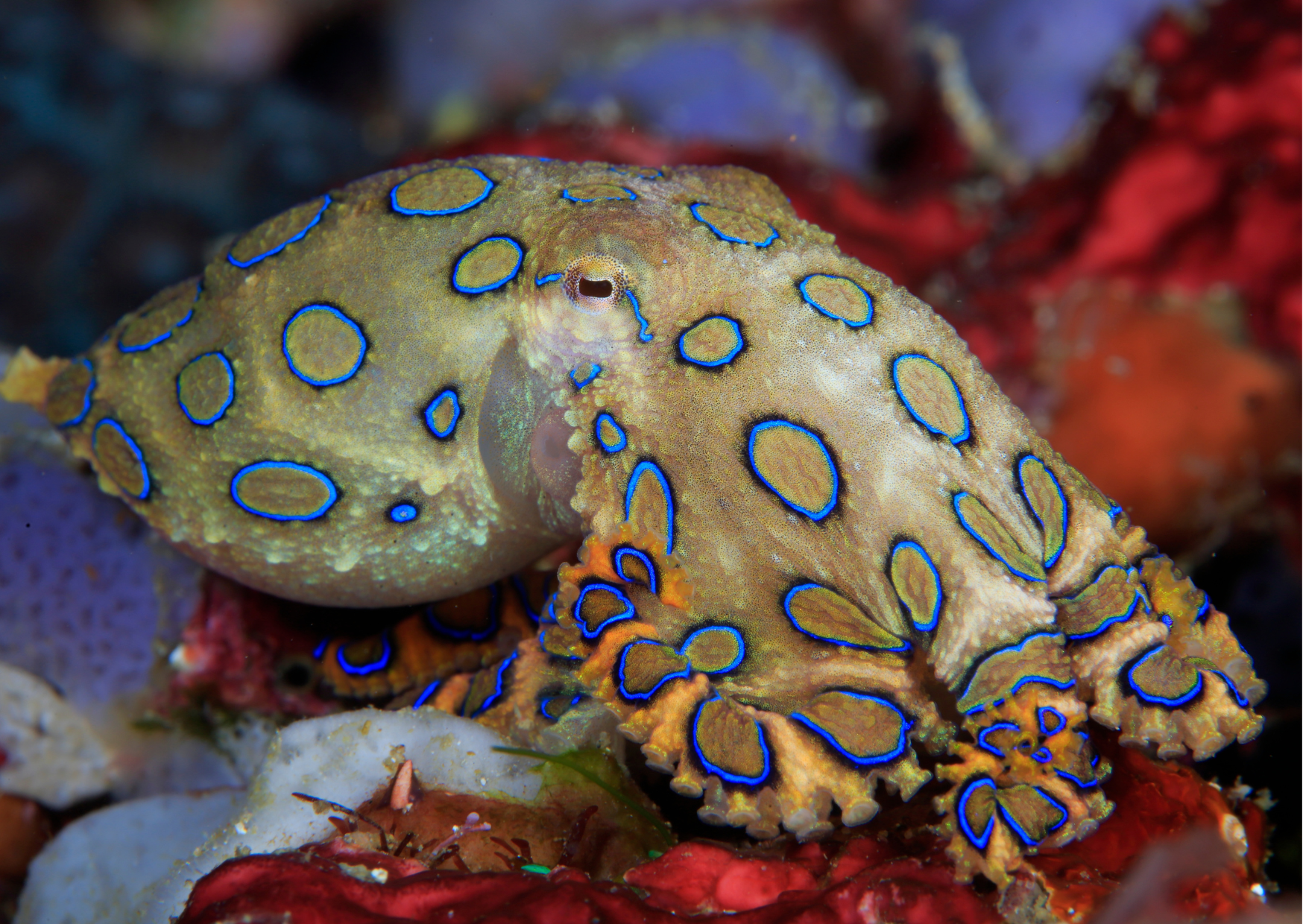Next working day delivery with Royal Mail Tracked 24
Fish Profiles: The Blue Ringed Octopus

Fish Profiles: The Blue Ringed Octopus
This is titled a "fish" profile, but an octopus is neither a fish nor a mammal. Instead, octopuses are cephalopods related to squid and cuttlefish. The octopus is classified as one branch of mollusks.
The blue-ringed octopus (Hapalochlaena) is a fascinating and highly venomous marine creature found in tide pools and coral reefs across the Pacific and Indian oceans, from Japan to Australia. Here are some key facts about these remarkable cephalopods:
Appearance
- Blue-ringed octopuses are small, measuring around 12 to 20 centimeters (5 to 8 inches) in length.
- They have eight arms, each lined with two rows of suckers that they use to catch their prey.
- When threatened, they display their characteristic blue rings, which are actually caused by pigments in their skin.
Venom and Toxicity
- Despite their small size and relatively docile nature, blue-ringed octopuses are incredibly dangerous if provoked.
- Their venom contains a powerful neurotoxin called tetrodotoxin, making them one of the world's most venomous marine animals.
- Tetrodotoxin affects the nervous system and can lead to paralysis, respiratory failure, and death in humans.

Behavior and Defense Mechanisms
- Blue-ringed octopuses spend most of their time hiding in crevices, using effective camouflage patterns with their dermal chromatophore cells.
- When provoked, they rapidly change color, turning bright yellow with their blue rings flashing iridescent blue as an aposematic warning display.
- In the greater blue-ringed octopus (Hapalochlaena lunulata), the rings contain multi-layer light reflectors called iridophores, which reflect blue-green light in a wide viewing direction.
Species
There are four confirmed species of blue-ringed octopuses:
- Greater blue-ringed octopus (*Hapalochlaena lunulata*)
- Southern blue-ringed octopus or lesser blue-ringed octopus (Hapalochlaena maculosa)
- Blue-lined octopus (Hapalochlaena fasciata)
- Hapalochlaena nierstraszi, which was documented and described in 1938 from a single specimen found in the Bay of Bengal.
Lifespan
Blue-ringed octopuses typically have a lifespan of approximately two to three years, although this can vary based on factors such as nutrition, temperature, and light intensity in their environment.
In summary, while these octopuses may appear small and harmless, their vibrant blue rings serve as a warning sign of their potent venom. It's best to admire them from a safe distance and avoid handling them!
To browse our range of Reef Octopus products please click here.
Photo credit(s): Shutterstock









